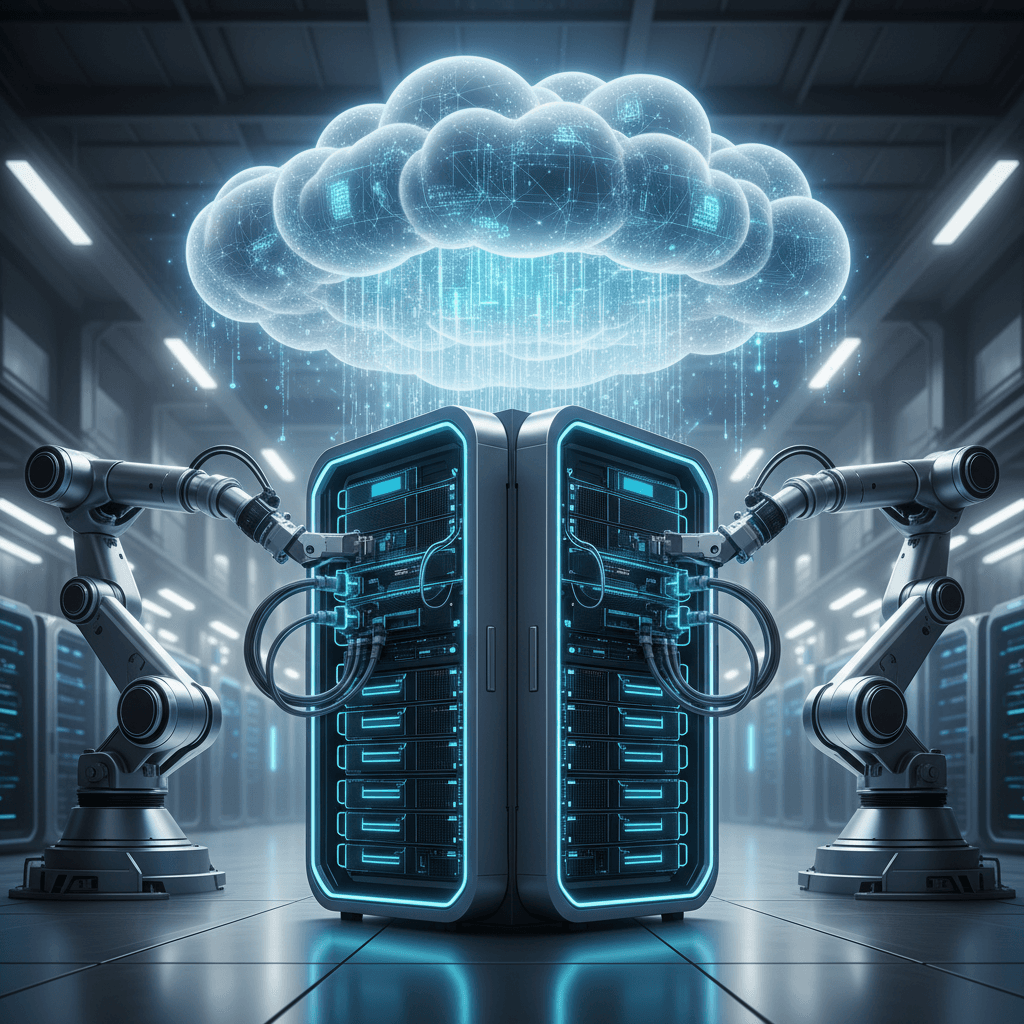OpenAI and Foxconn Partner to Reindustrialize US with AI Hardware
A profound shift: OpenAI and Foxconn reindustrialize America, building domestic AI hardware to secure the future of compute.
November 22, 2025

In a landmark move signaling a profound shift in the artificial intelligence industry, OpenAI has entered into a strategic partnership with manufacturing behemoth Foxconn to co-design and produce the next generation of AI data center hardware in the United States. This collaboration aims to create a more resilient and simplified domestic supply chain for the critical infrastructure needed to power increasingly complex AI models. The deal represents a significant step in OpenAI's strategy to gain greater control over its technology stack, from software to the physical hardware, as it embarks on an ambitious and costly expansion of its computational capacity. For Foxconn, the world's largest contract electronics manufacturer, the partnership accelerates its pivot from the slowing consumer electronics market to the high-growth, higher-margin sector of AI server and data center components. While the initial agreement does not include specific purchase commitments or financial obligations, it grants OpenAI early access to evaluate the systems and an option to buy, effectively intertwining the AI developer's roadmap with Foxconn's manufacturing prowess.[1][2][3][4][5]
The core of the partnership focuses on three main efforts: the parallel co-design of multiple generations of AI data center racks, the strengthening of the U.S. AI supply chain, and the domestic manufacturing of key components.[1][4] By combining OpenAI’s insights into the future hardware requirements of advanced AI with Foxconn’s engineering and manufacturing scale, the two companies aim to bring new systems online faster and secure long-term capacity.[1][4] Foxconn will manufacture essential equipment such as specialized cabling, high-performance networking gear, advanced cooling solutions, and robust power systems at its U.S. facilities, including locations in Wisconsin, Ohio, and Texas.[6][7][5][8][9] This initiative is framed by both companies as a move to reindustrialize America, ensuring that the foundational technologies of the AI era are built domestically, thereby speeding up deployment and improving reliability.[1][3][8] This collaboration is a significant component of OpenAI's staggering plan to invest approximately $1.4 trillion in AI infrastructure over the next several years to meet the voracious computational demands of its future models.[1][6][7][3][5][10]
This strategic alliance is driven by pressing needs for both partners. OpenAI faces the immense challenge of securing a vast and customized supply of computational infrastructure to train and run its sophisticated AI models.[11] The current market, largely dominated by a few key players for essential components like GPUs, presents bottlenecks and supply constraints. By moving into hardware design and partnering directly with a manufacturing giant, OpenAI is pursuing a vertical integration strategy aimed at reducing its dependency on external suppliers, lowering long-term costs, and ensuring its hardware is perfectly optimized for its specific workloads.[12][13][5] This follows a broader trend among tech giants like Google, Amazon, and Meta, which have also invested in developing proprietary chips to gain a competitive edge.[12][14] For Foxconn, this partnership is a crucial step in its diversification strategy. Best known for assembling Apple's iPhones, the company has faced shrinking margins in consumer electronics and is aggressively expanding into more profitable areas like electric vehicles and, most significantly, the booming AI server market.[2][15][16][17] The company is already a key supplier for Nvidia and has seen its AI server revenue surge, making this direct collaboration with a leading AI lab a logical and strategic progression.[5][18][19]
The implications of the OpenAI-Foxconn partnership extend across the technology industry and into the realm of national industrial policy. The move intensifies the competitive landscape, pressuring rivals to consider similar manufacturing partnerships to avoid falling behind in infrastructure deployment capabilities.[5] It underscores a fundamental shift where control over the physical infrastructure of AI is becoming as critical as the development of the AI models themselves.[5] However, the venture is not without significant risks. For Foxconn, there are execution challenges, particularly given its mixed track record with large-scale manufacturing projects in the U.S., such as the scaled-back Wisconsin plant.[5][8] For OpenAI, the financial gamble is monumental. The massive capital expenditures required for its infrastructure ambitions have raised concerns about the economic sustainability of its business model and fueled worries of a potential AI investment bubble.[20][6][5][16] The success of this collaboration also appears to be linked with U.S. industrial policy, as OpenAI has been actively lobbying for the expansion of the CHIPS Act tax credits to include AI data centers and servers, which could significantly lower the financial burden of such a large-scale domestic manufacturing build-out.[21][22][23][24]
In conclusion, the partnership between OpenAI and Foxconn marks a pivotal moment in the evolution of the AI industry. It is a calculated, high-stakes bet on the necessity of a vertically integrated and domestically-based supply chain to power the future of artificial intelligence. By bringing together a leading AI innovator and a manufacturing titan, the collaboration aims to fundamentally reshape how AI infrastructure is designed, built, and deployed. The success or failure of this ambitious undertaking will not only determine the competitive standing of both companies but will also have profound consequences for the global technology supply chain, U.S. manufacturing, and the very economics of developing and scaling artificial intelligence. The venture represents a bold attempt to build the physical foundation of the AI era on American soil, a move that will be closely watched by competitors, investors, and policymakers alike.
Sources
[2]
[6]
[9]
[10]
[11]
[12]
[13]
[14]
[15]
[16]
[17]
[18]
[19]
[21]
[22]
[23]
[24]